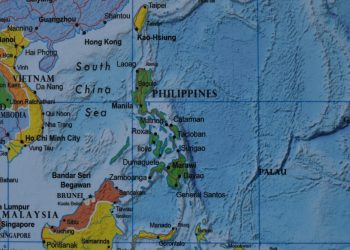NOAA’s Climate Prediction Center is predicting ]a near-normal Atlantic hurricane season this year. This outlook expects a 40% chance of a near-normal season, a 30% chance of an above-normal season and a 30% chance of a below-normal season. The hurricane season officially extends from June 1 to November 30.
For 2019, NOAA predicts a possible range of 9 to 15 named storms (winds of 39 mph or higher), of which 4 to 8 could become hurricanes (winds of 74 mph or higher), including 2 to 4 major hurricanes (category 3, 4 or 5; with winds of 111 mph or higher). In fact, NOAA provides these ranges with a 70% confidence.
[smlsubform prepend=”GET THE SAFETY4SEA IN YOUR INBOX!” showname=false emailtxt=”” emailholder=”Enter your email address” showsubmit=true submittxt=”Submit” jsthanks=false thankyou=”Thank you for subscribing to our mailing list”]
This outlook indicates competing climate factors. The El Nino is expected to remain and suppress the intensity of the hurricane season. Countering El Nino is the expected combination of warmer-than-average sea-surface temperatures in the tropical Atlantic Ocean and Caribbean Sea, and a strengthened west African monsoon, which will favor increased hurricane activity.
NOAA’s National Weather Service is also making an upgrade to its Global Forecast System (GFS) flagship weather model, early in the 2019 hurricane season. This is the first major upgrade to the dynamical core of the model in almost 40 years and will improve tropical cyclone track and intensity forecasts.
NOAA’s National Hurricane Center and NWS office in San Juan will also expand the coastal storm surge watches and warnings in 2019 to incorporate Puerto Rico and the US Virgin Islands. What is more, NHC will display excessive rainfall outlooks on its website, providing greater visibility of one of the most dangerous inland threats from hurricanes.
Also, this season, NOAA’s Hurricane Hunter aircraft will collect higher-resolution data from updated onboard radar systems. These improved observations will be transmitted in near-real time to hurricane specialists at the National Hurricane Center, the Central Pacific Hurricane Center and forecasters at NWS Weather Forecast Offices.
In addition, NOAA has also issued seasonal hurricane outlooks for the eastern and central Pacific basins. A 70% chance of an above-normal season is forecasted for both the eastern and central Pacific regions. The eastern Pacific outlook calls for a 70% probability of 15 to 22 named storms, of which 8 to 13 are expected to become hurricanes, including 4 to 8 major hurricanes. The central Pacific outlook calls for a 70% probability of 5 to 8 tropical cyclones, which includes tropical depressions, tropical storms, and hurricanes.
NOAA’s Climate Prediction Center will update the 2019 Atlantic seasonal outlook in August just before the historical peak of the season.





























































